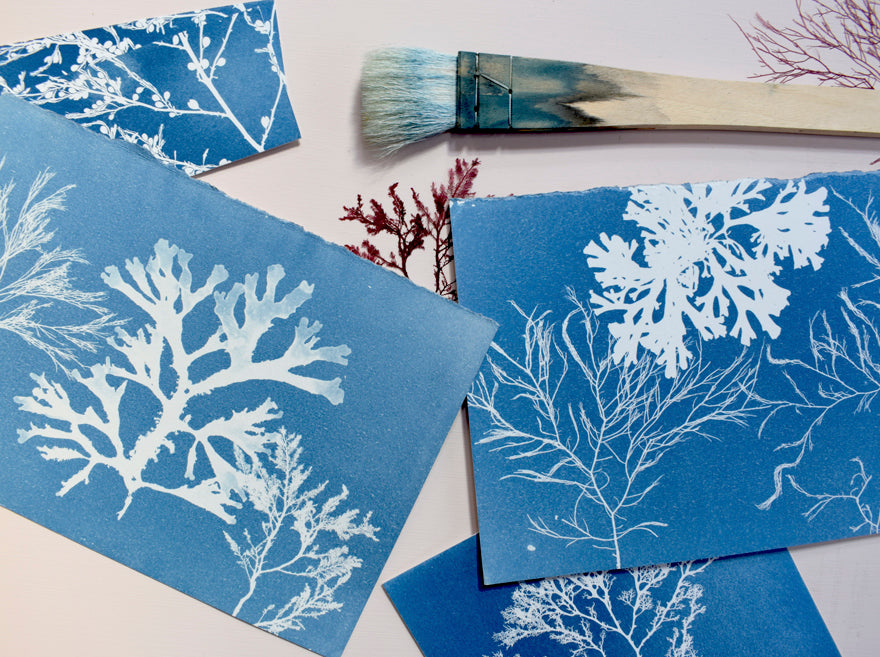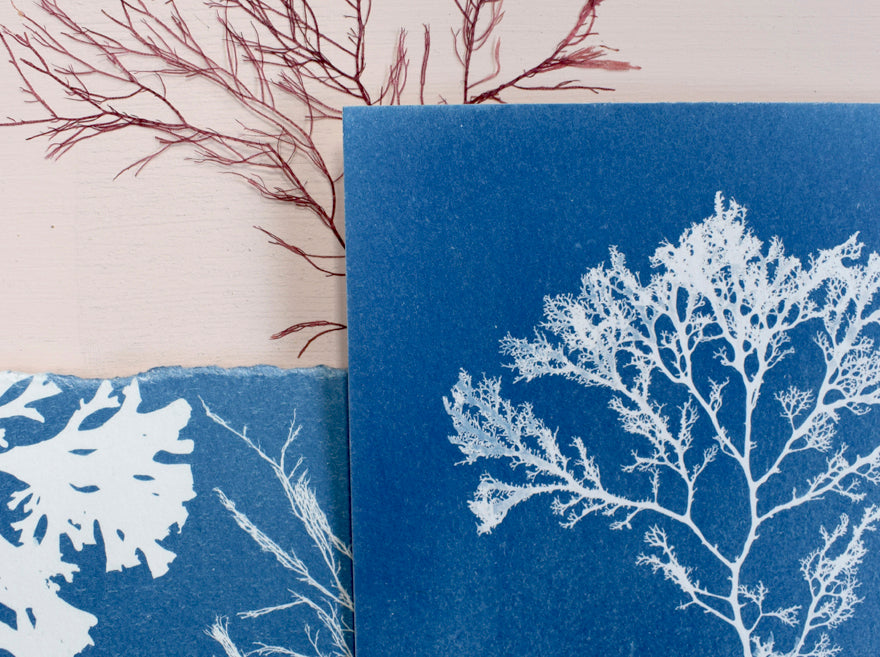The captivating history of cyanotypes intertwines creativity, science, and innovation. Cyanotype photography is one of the oldest photographic printing processes in the history of photography. It's a camera-less marvel, where objects are delicately placed upon paper coated with an iron salt solution and bathed in UV light. After gently washing with water, this process produces stunning images of striking white impressions and hues of Prussian blue.
Sir John Herschel: The inventor of cyanotypes
Sir John Herschel was an English scientist who worked on astronomy and early photography. He was a pioneer who, armed with curiosity and experimentation, birthed the cyanotype method in 1842. Herschel delved into the realm of photograms, harnessing sunlight to imprint objects onto chemically-coated paper.
Through a stroke of ingenuity, he revealed the world's first cyanotype — a captivating dance of ivory whites set against a rich backdrop of Prussian blue.
 Cyanotype process featuring seaweed prints by Paper Birch
Cyanotype process featuring seaweed prints by Paper Birch
Anna Atkins and the first book of photographs
Anna Atkins, a English botanical artist, collector, and photographer, holds the distinction of being the trailblazer behind the first-ever illustrated book featuring photographic images.
In the nineteenth century Atkins used cyanotypes, a novel photographic technique at the time, to meticulously capture impressions of botanical specimens. Utilising light exposures from the sun and a straightforward chemical process, she crafted remarkably detailed blueprints of various plants.
Atkins's pioneering use of emerging photographic technologies culminated in her creation of the first book comprised solely of photographic images.
Published in 1843, "Photographs of British Algae: Cyanotype Impressions," represents a significant milestone in the history of photography and botanical illustration.
 Cyanotype process featuring seaweed prints by Paper Birch
Cyanotype process featuring seaweed prints by Paper Birch


